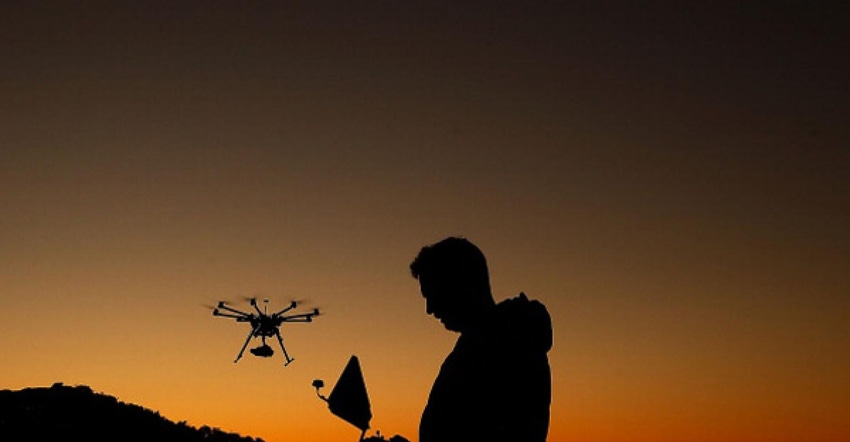Would an extra set of eyes in the skies be helpful in improving land management, managing livestock and planning for future expansions and investments? Here are four ways a drone can help.
November 6, 2018

Last week, I wrote an update about current laws on drone usage and your rights as a landowner if an unwelcome drone is flying overhead.
READ: Are you protected from Peeping Toms overhead?
This week, I want to expand on the topic of drones and discuss the practical applications that these tools have to offer beef producers.
A recently article written by Jimmy Doyle, South Dakota State University Extension natural resource management field specialist, explains how drones can be used on the ranch to improve management and operations.
Doyle writes, “Drones are not new to the agricultural world and have been employed primarily in the crop sector for several years. These have primarily been relatively expensive, specialized units that were of limited utility outside of the crop fields.
“As the technology has evolved, costs have come down and the accessibility and utility of drones outside of the crop sector has improved. While drones cannot and should not replace in-the-field work and observation, they have a lot of potential for applications on the ranch in a variety of areas.”
If you need to convince a special someone to buy you a drone for Christmas this year, here is a list of four ways that a drone could enhance your management practices and allow you to plan for expansion, improvements or investments in your ranch enterprise.
1. Collect more data with much less labor
Doyle writes, “Using a drone as part of a rangeland monitoring program will open up a new perspective that is not visible from the ground level. Many consumer drones can be used to take photo points, repeated pictures from the same location that visually track changes over time.”
Additionally, some flight software allows the user to send the drone on a preprogrammed path, which could be used to create photo transects of a larger area, he says. “While detailed ground-level data is still very important, a drone opens up the possibility of collecting more data with much less labor.
“One limitation of ground-level data is that it is just that – ground level. A drone can offer a perspective from 10 feet, 50 feet, 100 feet, or more, providing useful insights into different trends than can be seen from the <6-foot view when only conducting monitoring on foot.”
READ: Drones, drones on the range
2. Aerial maps can improve land management practices
Doyle explains, “Aerial maps are a valuable tool for planning grazing, crop rotations, infrastructure development and more. Maps from satellite imagery are helpful, but are often limited by poor resolution, cloud cover and out-of-date imagery.
“A drone can be used to create a more up-to-date, high resolution map of a ranch using a combination of flight planning software and photogrammetry software that combines many overlapping photos into one geo-referenced map. These maps may take several flights depending on the area covered, the type of drone used and the resolution desired.”
3. Monitor livestock, fences and water sources
“An overhead view can greatly simplify head counts on cows and calves, for instance, over trying to count multiple classes of livestock as they are milling around in the pasture,” says Doyle. “Some drones can be outfitted with near-infrared cameras that detect heat, which can be used to locate strays or find animals in heavy cover or rough terrain.
“A preprogrammed flight path could be used to check remote water sources or fencelines, potentially saving hours of labor and wear and tear on a pickup. Drones can be used to check calving pastures, potentially with less disturbance to the livestock.”
READ: Drones, smart ear tags & cameras: The case for using more technology on the ranch
4. Collect data on individual animals
Doyle says, “New technologies are being developed that allow producers to monitor individual animals with a drone. A RFID reader can log unique tag numbers and alert the user if a particular animal was not detected. Some types of tags can even monitor temperature and behavior parameters to help identify health issues with an animal. Of course, this technology should only be used to supplement, not replace, old-fashioned observation and sound animal husbandry.”
This is just the tip of the iceberg in the ways drones could simplify our lives. The challenge is selecting a drone that is cost effective, easy to use and effective in the management tools you are hoping to implement.
A drone won’t eliminate the need to physically oversee the ranch. However, an extra set of eyes in the sky can help paint a clearer picture of the land, the livestock and areas where you can improve.
The opinions of Amanda Radke are not necessarily those of beefmagazine.com or Farm Progress.
You May Also Like



